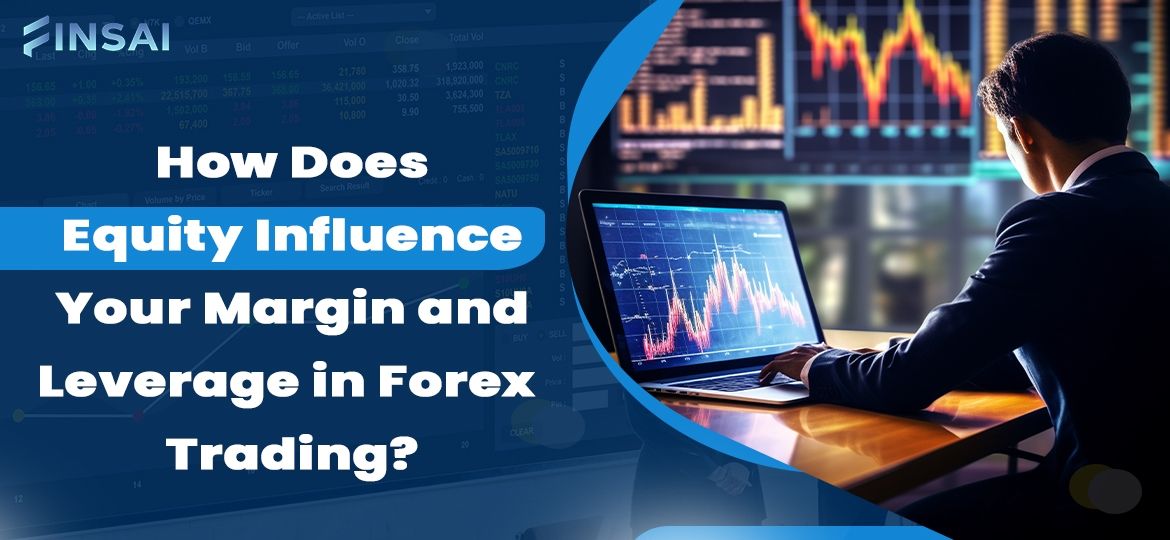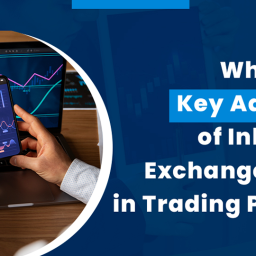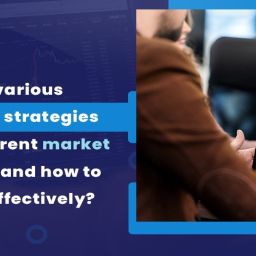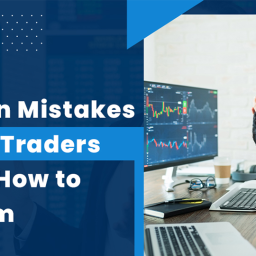
Effective fund management and risk control in the fast-paced environment of forex trading depend on an awareness of the ideas of equity, margin, and leverage. These three linked components are very important in influencing the possible losses and gains in FX trading. For individuals involved in online forex trading, understanding how equity affects margin and leverage may make all the difference in success or failure. This article explores these ideas and shows how they interact to affect your trading approach.
What Is Equity in Forex Trading?
In forex trading, equity is the overall worth of a trader’s account, including open position unrealized gains or losses in addition to the initial deposit. Equity is a dynamic asset that changes continually as the market moves and as trades are carried out.
Formula for Equity:
Equity = Accountaccount Balance + Unrealized Profits − Unrealized Losses
Equity=Account Balance+Unrealized Profits−Unrealized Losses
- Account Balance: This does not include any active positions or the current value of the trading account.
- Unrealized Profits/Losses: Open positions that have not yet closed or been realized represent unrealized earnings or losses. They change depending on the market value of the assets under trade.
The equity would be $10,500, for instance, if a trader has an open position with an unrealized profit of $500 and his account balance is $10,000.
What Is Margin in Forex Trading?
For Forex Trade, the margin is the required money to open and keep a position. It serves as a security deposit, therefore enabling the trader to offset possible losses. Usually stated as a percentage of total trading volume, the margin is established by the broker.
Types of Margin:
1. Initial Margin (Required Margin): that which is needed to open a new position—is known as the required margin. For a trader wishing to initiate a $100,000 position with a 1% margin requirement, for instance, they would have to have $1,000 in their Account account.
2. Maintenance Margin: The minimal equity needed to be kept in the account to maintain the trade open is known as the maintenance margin. Should equity drop below this level, a margin call might follow.
For instance, a trader with $10,000 in equity opening a position with a $1,000 margin has a $9,000 free margin to open more trades or absorb possible losses.
In forex trading: what is leverage?
Leverage in forex trading is a technique that lets traders manage a bigger position size with less cash. It is stated as a ratio, like 50:1 or 100:1, showing the proportionate increase in market position a trader may influence over their margin.
Leverage’s formula is
Use leverage equal to the total position size.
Margin Needs
Use= Margin Requirement
Total Position Size
With a leverage of 100:1, for example, a trader can control a $100,000 position with just $1,000 of margin.
How Equality Affects Margin and Leverage in Mind
In forex trading, how much margin is available and how leverage is used depend mostly on equity. Good trading and risk management depend on the interactions among these components.
1. Margin Requirements and Equity
The margin a trader can use directly is influenced by equity. More margin is accessible to initiate new positions or preserve current ones in the trading account, and the more equity it boasts.
- Effect of Equity Variations: The accessible margin varies along with changes in equity brought about by market movements. Should the market favor an open position, the unrealized gains boost equity, therefore giving the trader additional margin. On the other hand, unrealized losses lower equity and hence limit the available margin if the market swings against the position.
- Margin Calls: A margin call is an event whereby a trader’s equity falls below the level of maintenance margin. Under these circumstances, the broker could demand the trader to close some positions or make extra deposits to bring the account back to the needed level. In highly leveraged accounts, where even minor market changes can have a big impact on equity, this scenario can develop fast.
2. Leverage and Equity
Equity determines a trader’s available leverage as well. Leverage increases both possible gains and possible losses even while allowing one to be more market-exposed with less capital.
- High Equity and Low Leverage: Higher equity traders may afford to utilize lower leverage, therefore lowering their chance of significant losses. For 10:1 leverage, a trader with $100,000 in equity, for instance, controls a $1,000,000 stake. Should the market turn down, the effect on equity is less severe than that of utilizing more debt.
- Low Equity and High Leverage: Traders with lesser equity could be tempted to employ more leverage to control bigger positions. Still, this raises a great danger for major losses. For instance, a trader with $10,000 in equity utilizing 100:1 leverage holds the same $1,000,000 position as in the preceding scenario. A little negative market action could cause a margin call or perhaps an account wipeout.
- Leverage Limits: Many brokers, based on the trader’s equity, impose restrictions on the highest leverage possible. This is a risk control tool used to stop traders from assuming too much risk in relation to their account balance.
Practical Consequences for Investors
Management of risk and wise trading decisions depend on an awareness of how equity affects margin and leverage.
1. Handling Risk
Good risk management calls for keeping a good equity ratio in relation to the positions undertaken. This involves:
- Setting Appropriate Stop-Loss Levels: Determining appropriate stop-loss levels helps to guard equity against major losses.
- Leverage Wisely: Steer clear of leverage that is too high and can cause quick equity loss.
- Frequent Equity Monitoring: Particularly in erratic market situations, frequently monitor equity values.
2. Position Sizing:
Position sizing is the process of choosing, from the available equity, how much of a currency pair to trade. Correct size guarantees that the risk on any one trade stays within reasonable bounds.
For instance, a trader running a 2% risk on a trade on their $50,000 equity would risk $1,000. This would let them control a $50,000 stake with a 50:1 leverage. Setting the stop-loss at 50 pip allows the trader to figure out the suitable position size to fit the $1,000 risk.
3. Avoiding Calls for Margin
Traders who want to avoid margin calls have to keep enough equity in relation to their open positions. One may reach this by:
- Reducing Leverage: Reducing leverage lowers the possibility that equity will be below margin criteria.
- Closing Losing Positions Early: Early closing of losing positions helps to prevent a major impact on equity.
- Depositing Additional Funds: Adding money to the account will help keep margin levels and grow equity.
Final Thought
Basic ideas in forex trading that are intricately entwined include equity, margin, and leverage. Effective fund management, risk control, and trading performance depend on a knowledge of how equity affects margin and leverage. Traders can negotiate the complexity of online forex trading more boldly and reach their financial targets by keeping appropriate equity levels, employing leverage sensibly, and following effective risk management techniques.





